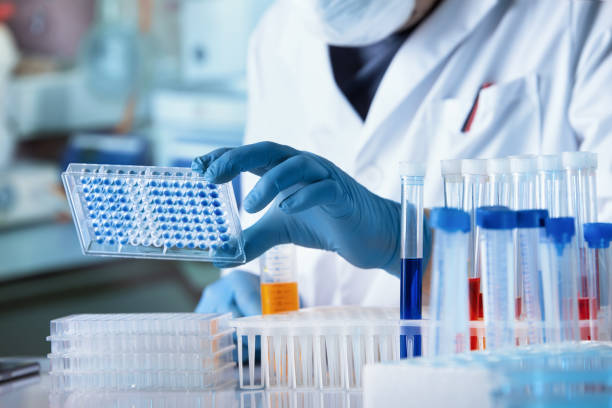Europe is in the grip of a silent epidemic, but it’s not the kind that makes for dramatic headlines. Instead, it’s a pervasive, growing crisis defined by booming demand and increasingly sophisticated supply. From the cocaine-flooded ports of Antwerp and Rotterdam to the synthetic drug labs in the Dutch countryside, Europe has become a global hotspot for illegal drug consumption.https://medschemicalsuppliers.com/
This isn’t just a story about organized crime; it’s a story about a profound shift in European society. The demand for drugs is no longer a niche issue—it’s mainstream, and it’s reshaping the continent’s health and security landscape.
The Scale of the Surge: A Market in Overdrive
The numbers paint a stark picture. According to the European Monitoring Centre for Drugs and Drug Addiction (EMCDDA) and Europol, the European drug market is more dynamic and accessible than ever before.
- Record Seizures, Record Supply: Cocaine seizures have reached all-time highs, with over 300 tonnes confiscated in 2021 alone. This isn’t just a sign of effective policing; it’s a direct indicator of the massive volumes flooding the market to meet soaring demand.
- A Poly-Drug Continent: While cocaine use is surging, it’s just one part of the story. Cannabis remains the most widely consumed drug, but the market is diversifying. High-potency MDMA, amphetamines, and a constant flow of new synthetic substances are readily available.
- Unprecedented Purity and Potency: The drugs on the European street are now consistently high in purity and low in price, a clear sign of a mature and competitive market aiming to attract and retain users.
The Demand Drivers: Why is Europe Using More Drugs?
Several interconnected factors are fueling this demand.
1. The „Normalization“ of Recreational Use
For a growing segment of the population, particularly in urban nightlife and among professionals, drug use has been destigmatized. Cocaine, MDMA, and ketamine are often viewed as lifestyle accessories for socializing and coping with pressure, rather than as dangerous illicit substances. This cultural shift has created a vast, steady consumer base.
2. The Pandemic’s Lasting Impact
The COVID-19 lockdowns and their aftermath acted as a catalyst. Initial disruptions were quickly replaced by a surge in demand as people sought to cope with isolation, anxiety, and later, to fuel a „post-lockdown party boom.“ The market adapted with ruthless efficiency.
3. The „Uberization“ of Drug Delivery
The digital transformation of the drug trade cannot be overstated. The digital infrastructure—encrypted messaging apps and the dark web—has made acquiring drugs as easy as ordering takeout. In many cities, drug delivery services offer speed and convenience that rival legal businesses, reducing the perceived risk and effort for users.
4. A Thriving Domestic Production Hub
Europe is no longer just a consumption zone; it’s a major producer. The Netherlands and Belgium have become epicenters for the production of synthetic drugs like MDMA and amphetamines. This domestic production ensures a stable, cheap, and reliable supply, insulating the European market from international supply chain disruptions and further stimulating demand.
5. Underlying Social and Mental Health Strains
Beneath the surface of recreational use lies a deeper crisis of mental health. Rising levels of anxiety, depression, and social disconnection, particularly among the young, drive many to self-medicate with easily accessible substances.
The Consequences: More Than Just a Headline
This booming demand has severe knock-on effects:
- Public Health Crisis: Drug-related deaths and hospitalizations are rising. The high potency of modern drugs increases the risk of overdose and accidental poisoning.
- Environmental Damage: Clandestine drug labs dump toxic waste, causing significant environmental harm.
- Corruption and Violence: The immense profits fuel brutal gang violence, as criminal groups battle for control of trafficking routes and local markets. This violence is increasingly visible on European streets and threatens to corrupt public institutions.
A Crossroads for European Policy
The traditional law-enforcement-led approach is struggling to keep pace. While vital for targeting high-level traffickers, it does little to curb the underlying demand.
The conversation in Europe is now shifting towards a more balanced, public health-focused strategy:
- Harm Reduction: Expanding life-saving measures like drug checking (pill testing) at festivals, supervised consumption rooms, and naloxone distribution.
- Targeted Prevention: Moving beyond scare tactics to honest, evidence-based education that addresses the realities of the modern drug market.
- Strengthening Treatment: Ensuring that accessible and effective treatment options are available for those who need them, treating addiction as a health issue, not a moral failing.
The Road Ahead
Europe’s drug demand problem is a complex reflection of its social and economic state. There is no simple solution. Effectively addressing it requires a clear-eyed acknowledgment that the market is driven by deep-seated demand—a demand that is being met with terrifying efficiency by agile and violent criminal organizations.
The future of Europe’s fight against drugs will depend on its ability to not just intercept shipments, but to dismantle the very reasons people are turning to drugs in such unprecedented numbers. It is one of the most significant, and underrated, challenges facing the continent today.


What a helpful and well-structured post. Thanks a lot!